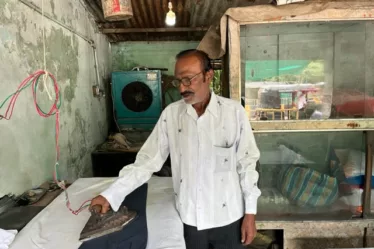Years ago, in Sevagram, PC, a young girl, arrived at our hospital in the midnight—motionless and speechless. Her ordeal began after a family dinner. Her family noticed something was amiss. She couldn’t speak, move, or even swallow her saliva. Panic set in as they rushed her to our hospital.
In the ICU, residents checked her vitals, examined her brain, and ordered a brain scan. A normal scan ruled out a stroke. Malaria? The test was negative. Electrolyte disturbance? Potassium was normal. Labs? All test results were normal. Poisoning? Perhaps, but no clear signs. Suspecting pesticide poisoning, a common medical emergency in our setting, the residents initiated treatments. A stomach wash, atropine, and antidotes, and mechanical ventilation. But her condition remained dire.
At 2 am, a young lecturer arrived in the ICU. She saw the patient and thought outside the box. Could it be a neurotoxic snake bite? Her droopy eyes and paralyzed palate hinted at it. The residents were not convinced of the diagnosis, though.
With the family’s reluctant consent, nurses injected anti-snake venom into her vein. Neostigmine injections followed. We continued supporting her lungs with mechanical ventilation, waiting for her to regain her breathing. At the crack of dawn, PC’s journey to recovery began.
As hours passed, her drooped eyelids lifted, her muscles regained strength, and she began to breathe freely. She became articulate, drank some water, and ate a biscuit. The power of timely diagnosis and treatment amazed us all. Her family could not believe their eyes. The nurses and residents were overjoyed! Nothing brings more joy to young doctors than seeing a patient respond to the treatment they painstakingly design, and in this case, watching their diagnosis turn out to be true.
Why did we miss the snake bite? We treat so many of them—hundreds—every year. In the middle of the night, tired residents might not think of a krait bite, chasing differentials instead. And sometimes, even experienced minds overlook the obvious.
Late that fateful night, something unsettling happened to PC. While she peacefully slumbered on the floor, a stealthy krait, renowned for its midnight paralysis, paid her an unexpected visit. The krait struck without warning, injecting venom into her leg, and then vanished into the darkness. What sets krait bites apart is their eerie silence – no fang marks, no pain, no swelling, no bleeding. The aftermath was evident on the girl’s face: her eyelids drooped, speech and swallowing became laboured, and every breath was a struggle.
Just a week after her ordeal, PC left our hospital, walking unaided, her eyes expressing unspoken gratitude. Her remarkable journey serves as a valuable lesson—that in the darkest hours of the night, when the world sleeps, we cannot rely solely on Western textbooks to effectively care for acutely ill people arriving from our villages.
